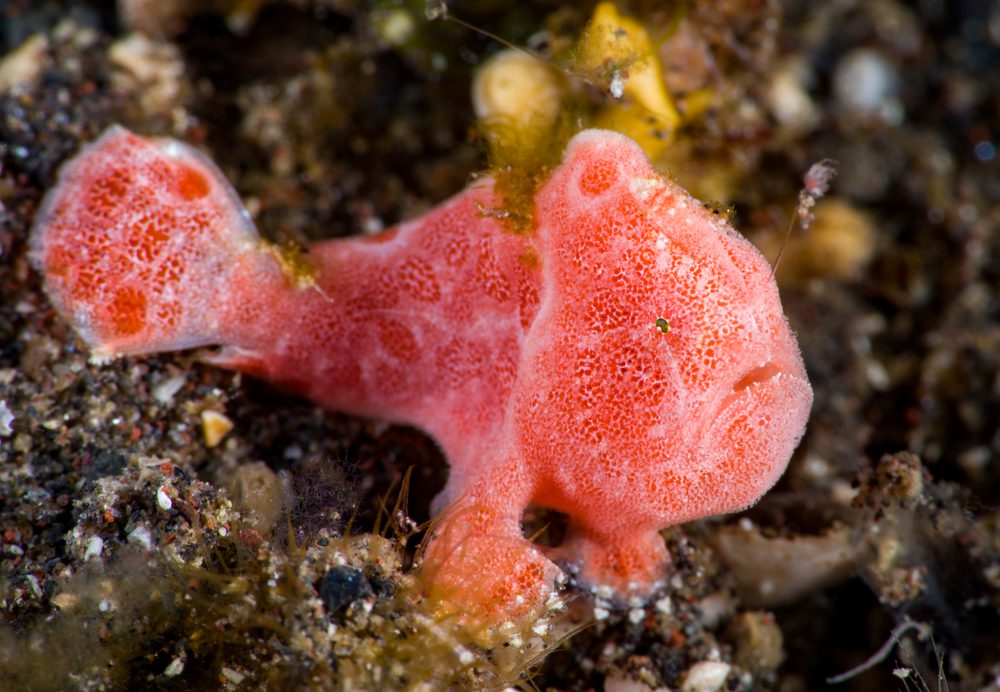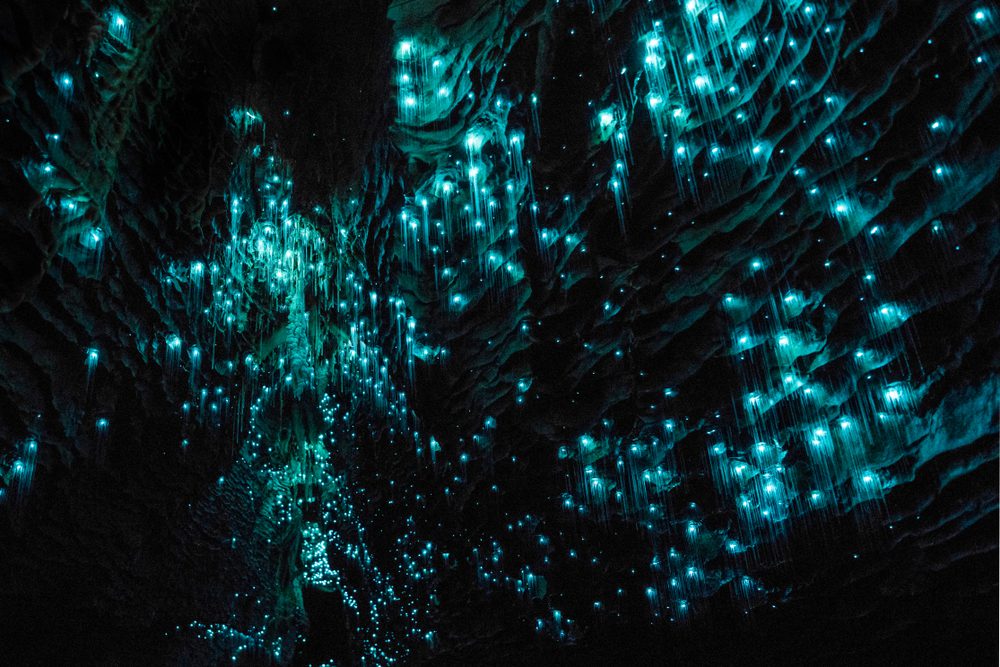I think we can all agree that animals are amazing creatures and we’re so blessed to live in a world where we can coexist, of course, they have their own habitat and we wouldn’t want to see a lion in the New York Central Park because that would be terrifying. However, we need to do everything in our powers so that these amazing animals won’t go extinct, but I will leave this topic for another time.
The animals are predators by nature, but each one has a different and very astonishing technique that helps them kill their prey. They’re trained to survive in the natural world, but that’s not quite an easy task, because the hunter can become the prey.
Read on to find 9 animals with the strangest hunting techniques! I guarantee you’ll be amazed.

1. Frogfish
I don’t want to offend anyone but frogfish are definitely not the prettiest fish in the sea. Some would say it’s very strange-looking, and I totally agree. Besides not being very handsome, it’s also a bad swimmer. That’s quite bizarre, considering that it lives in the water.
The frogfish likes to stay close to the ocean floor, but you shouldn’t underestimate it, as it is a spectacular hunter. Their ugliness helps them attract prey. To be more precise, they use their strange appendage that looks like a tiny group of dangling worms as bait. What’s awesome is that their appendage can regenerate in case it’s bitten off.
When they have the prey in their sight, these tiny fish can strike a lighting speed for as little as 6 milliseconds until the victim is immobilized, and then they open their huge wide mouth that helps them swallow animals twice their size.
The frogfish is known to be one of the strangest and most awesome predators, with the quickest ambush in the whole world. How awesome is that?
2. Margay
Margay is a very handsome nocturnal small cat that lives mostly in South and Central America. Because it is a small animal, margay usually hunts monkeys, squirrels, birds, lizards, tree frogs, and bird eggs, but it can also be vegetarian when needed.
Besides being a small cat, it has a unique method of hunting the prey. The margay has been found to imitate the calls of the prey. It can mimic sounds like monkey infant cries in order to attract the mother. This is a very smart and rare technique that helps margay to catch the prey without putting too much effort into the attack. Additionally, this method seems highly successful.
In 2009, a group of researchers working in the Amazon jungle (Brazil) confirmed that margay has the ability to mimic the calls of the prey. They saw a margay imitate exactly the sound of a pied tamarin baby, making the tamarins follow the calls. However, its attempt to catch the prey was proved to be unsuccessful, because the tamarin standing guard had plenty of time to warn the group by emitting a loud noise.
Even though the margay didn’t catch her prey at that time, the researchers were amazed about how well the cat could imitate those sounds, given that the strategy is very effective in attracting prey.
3. Bottlenose dolphins
Let’s take a moment to appreciate how beautiful these creatures really are. It’s incredible to see them in their natural habitat and very unique experience. They’re known to be very smart, even smarter than the Tv show “Flipper” lets us see.
What’s very interesting about dolphins, is that they usually hunt in groups. They eat a wide variety of fish, squids, and shrimps, depending very much on their geographic location. They have many hunting techniques to attract the prey, but one of the strangest is when they create “mud nets” that force fish to jump out of the water, straight into their mouths.
They create the mud nets by hitting the ocean floor with their tail, a method that makes the mud stir while creating a whirlpooling ring. As an effect, fish will jump out of the water, where the bottlenose dolphins would be with their mouths wide open, enjoying the hunt. It’s important to mention that they take turns, some of them stay on the ocean floor and create the mud nets while the others are waiting for the prey with their mouths open. After they’ve had enough, they switch turns.
Their clever method was even captured on the BBC Earth, and it’s pretty incredible to watch.

4. Glowworms
Glowworms look amazing but I’m sure all the flying insects hate them because they’re deadly. They’re very pretty on the eye but very, very dangerous. These illuminated larvae are a huge tourist attraction in several areas of New Zealand. They thrive in dark and humid environments, where they can show off their special glow.
They use their glow as a unique hunting method that attracts prey. The insects are attracted by the blue light, which is actually a trap, as they get stuck in the sticky hanging lines. The glowworms begin drawing up the hanging line and enjoy the delicious meal. If an insect gets too close, the chances of it escaping are very low.
The glowworms can eat only when they’re in the larvae stage. They usually stay in that stage for nine months. After becoming fungus gnats, they can’t feed anymore as they don’t have mouths.
However, an adult fungus gnat lives only for three days, just enough time for them to reproduce and lay eggs.
5. Archer fish
Just like the kids play with the super soaker water pistol, the archer fish uses this as a technique to catch its prey. His hunting method is unique and this fish even got its name from it. They start by floating near the surface of the water where they can find a lot of insects.
It’s almost impossible for them to fail. The most interesting part about their hunting technique is the splash of water that comes from their mouth that goes straight to their target. Even if they miss at first, archer fish is very ambitious and won’t give up so easily. Also, they can eject seven streams of water all at once.
Archer fish can be found in South East Asia and Northern Australia, in brackish water habitats. It’s pretty cool that they’re one of the few animals in the wild that are using tools (water) to catch their prey.
6. Komodo dragon
Komodo dragons or otherwise called “land crocodiles” are huge creatures that can grow up to three meters long and 70 kilograms. It’s no wonder they’re the largest living lizards in the world. Pretty cool, right?
These beasts are carnivores and know for having a bad relationship with us, humans after several attacks have been recorded. However, the chance of seeing one in the wild is very low, as they live mostly in restricted areas in Indonesia, including Komodo, a national park where they can be spotted.
The komodos like to hunt in packs and they use their advanced camouflage skills, waiting patiently until the victim comes closer. They attack their prey by biting down the victim with their sharp teeth and claws. The komodos have venom glands full of toxins that cause the victim to bleed rapidly and sends the prey into shock. They like to eat the prey alive, tearing the flesh of the victim’s bones.
This technique rarely fails, and even if the prey miraculously escapes, the komodo dragon can follow the prey for miles as the venom takes over their bodies, and eventually, they are going to enjoy the delicious meal, because they’re very persistent. If you’re a big fun of these creatures, here’s a cool T-shirt you might want to try!

7. Golden eagles
The golden eagle earned his reputation as a deadly predator that doesn’t like to skip a delicious meal. They usually eat squirrels, grouse, pheasants, reptiles, and birds. However, they were also found to attack and eat deers, so you can now understand how strong and powerful they are.
Golden eagles have powerful feet and sharp claws that allow them to rapidly come down and catch their prey. You probably saw the videos circulating the internet, where golden eagles were captured when catching goats from the cliffs and then intentionally dropping them into the rocks in order to kill them. After the goat is dead, the eagle will feed on it.
It’s amazing how they can grab such heavy animals, a goat usually weighs more than 100 kg (250 pounds) so they are very strong and fierce. They take hunting to the next level. According to Fairbanks wildlife biologist Jack Whitman, who studied golden eagles in Idaho, “Golden eagles are built for killing.”
As he explained, when they attack bigger animals, they like to go for the eyes. For general hunting, a lot of time they grab the animal instantaneously, and the talons enter on both sides, between the ribs, and puncture the lungs. Then they sit and watch, and wait, or come back later.
8. Deinopidae
Deinopidae or net casting spiders live in the tropical areas in Australia, Africa, and America. They like to hunt in the dark, thanks to their extraordinary vision. These spiders use their huge eyes to detect their prey, and then toss their net over the victim in a very fast move. They usually eat ants, moths, crickets, and beetles.
The net is made from the spider’s own silk, and what’s even more interesting about them, is that they can create a net three times their size. The net acts like a trap, that almost never fails.
9. Electric eel
The electric ell has a unique hunting technique that almost never fails, and let me tell you, they are very very special. They like to live in Amazon’s dark and murky waters. Electric eels kill their prey by using their shock power to control the victim’s muscles. They are very, very fast, and almost never fail. When they feel the prey approaching, thanks to their motion-sensitive hairs on their body, electric eels send two rapid electric pulses that immobilize and paralyze the victim.
They are carnivorous predators, usually eating fish, crustaceans, insects, amphibians, reptiles. “Striking eels emit electricity in volleys of 1 ms, high-voltage pulses,” explained neurobiologist Kenneth Catania. “In a typical attack, eel discharges cause brief, immobilizing tetanus, allowing eels to swallow small prey almost immediately.”
“The eel essentially has remote control over the prey’s muscles and runs them to exhaustion, leaving the prey temporarily helpless.”
For more interesting facts about animals, make sure to take a look here: Why Does Everyone STILL Believe These 9 Ridiculous Cat Myths?












One Response
Very interesting!! My degree is in social science, not the hard ones.